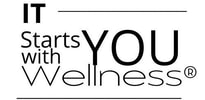1.6 (A) How Anxiety Builds
How Anxiety Can Develop and Build:
When an issue develops in our life, and we allow our minds to dwell on it, the body can start to react negatively to the situation.
1) We can start to develop negative thought patterns, which is our mind giving direct focus to the issue at hand. This is where the term “Where energy flows, the mind goes” comes from. The more attention you give something, the more the mind will settle into it. Over time, if the pattern of negative thoughts continues, the mind may understand or think that these negative thoughts are normal for the body, and continuously send out ways of protection, in order to keep you safe. This is where the “fight or flight” response can get involved.
2) We can start to develop tension in our bodies, which again, is a tool the body uses to protect itself. As the “fight or flight” response gets activated, our muscles will start to contract to shield the body from a possible danger. The more the issue at hand remains unresolved, the more muscle tension can develop, and the more negative thought patterns can flow through our minds.
It’s one thing to have negative thought patterns flow through our minds. It’s another thing when we hold onto these negative thoughts, to a point they lead into a fear. This is how anxiety can develop in some people. We can get stressed about certain situations, but it’s when we can’t let go of the situation, and it leads into a FEAR, that we cross the line into anxiety. In addition, due to the muscular tension, we may start to feel weird sensations inside our bodies. If we don’t ignore these sensations, we may start to question them. As the pressure builds even deeper, the sensations can build, and become more prevalent. And, of course, the more prevalent, the more we start to put a direct focus on these sensations. The more focus we give the sensations, the more power they receive, and ultimately, the more we worry about them. (Again, "Where energy flows, the mind goes".)
When an issue develops in our life, and we allow our minds to dwell on it, the body can start to react negatively to the situation.
1) We can start to develop negative thought patterns, which is our mind giving direct focus to the issue at hand. This is where the term “Where energy flows, the mind goes” comes from. The more attention you give something, the more the mind will settle into it. Over time, if the pattern of negative thoughts continues, the mind may understand or think that these negative thoughts are normal for the body, and continuously send out ways of protection, in order to keep you safe. This is where the “fight or flight” response can get involved.
2) We can start to develop tension in our bodies, which again, is a tool the body uses to protect itself. As the “fight or flight” response gets activated, our muscles will start to contract to shield the body from a possible danger. The more the issue at hand remains unresolved, the more muscle tension can develop, and the more negative thought patterns can flow through our minds.
It’s one thing to have negative thought patterns flow through our minds. It’s another thing when we hold onto these negative thoughts, to a point they lead into a fear. This is how anxiety can develop in some people. We can get stressed about certain situations, but it’s when we can’t let go of the situation, and it leads into a FEAR, that we cross the line into anxiety. In addition, due to the muscular tension, we may start to feel weird sensations inside our bodies. If we don’t ignore these sensations, we may start to question them. As the pressure builds even deeper, the sensations can build, and become more prevalent. And, of course, the more prevalent, the more we start to put a direct focus on these sensations. The more focus we give the sensations, the more power they receive, and ultimately, the more we worry about them. (Again, "Where energy flows, the mind goes".)
